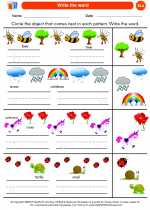Topic: Puzzle
A puzzle is a game, problem, or toy that requires ingenuity and patience to solve or put together. It often involves piecing together different elements to form a complete picture, solve a problem, or achieve a specific objective. Puzzles can come in various forms, including jigsaw puzzles, crosswords, Sudoku, riddles, and logic puzzles.
Types of Puzzles
- Jigsaw Puzzles: These puzzles involve assembling interlocking pieces to create a complete picture.
- Crossword Puzzles: A word puzzle that typically takes the form of a square or rectangular grid of white-and-black shaded squares. The goal is to fill the white squares with letters, forming words or phrases by solving clues that lead to the answers.
- Sudoku: A number puzzle that requires filling a 9x9 grid with digits so that each column, each row, and each of the nine 3x3 subgrids that compose the grid contain all of the digits from 1 to 9.
- Riddles: Puzzles that present a question or statement that requires a clever or unexpected answer.
- Logic Puzzles: These puzzles involve using deductive reasoning and critical thinking to solve a problem, typically involving a scenario with specific constraints and a set of clues to solve it.
Benefits of Solving Puzzles
Solving puzzles offers numerous cognitive and educational benefits, including:
- Improving problem-solving skills
- Enhancing critical thinking and logical reasoning
- Developing patience and perseverance
- Boosting memory and cognitive function
- Strengthening spatial awareness and fine motor skills (for physical puzzles)
Study Guide
If you're interested in exploring puzzles further, here are some study guide tips to enhance your puzzle-solving skills:
- Start with simple puzzles to build foundational skills.
- Gradually increase the complexity of the puzzles as you become more confident in your abilities.
- Engage in different types of puzzles to strengthen various cognitive skills.
- Practice patience and resilience when facing challenging puzzles.
- Engage in puzzle-solving activities with peers or family members to foster collaboration and teamwork.
- Explore online resources and apps that offer a wide range of puzzles for continuous practice.
◂English Language Arts Worksheets and Study Guides Kindergarten. Write the word
Worksheet/Answer key Write the word
Write the word  Worksheet/Answer key
Worksheet/Answer key Write the word
Write the word  Worksheet/Answer key
Worksheet/Answer key Write the word
Write the word 

 Worksheet/Answer key
Worksheet/Answer key
 Worksheet/Answer key
Worksheet/Answer key

The resources above cover the following skills:
Students apply knowledge of language structure, language conventions (e.g., spelling and punctuation), media techniques, figurative language, and genre to create, critique, and discuss print and nonprint texts. (NCTE)